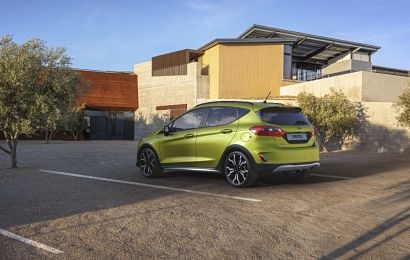
Fiesta drivers can now benefit from Ford’s sophisticated EcoBoost Hybrid technology, first introduced for passenger vehicle customers in the new Ford Puma crossover in late 2019.
The new hybrid Ford Fiesta will deliver enhanced fuel efficiency for Fiesta drivers. The company has committed to offering an electrified version of every passenger vehicle it brings to market in Europe and will grow its range of electrified vehicles in Europe to 18 on sale before the end of 2021.
“Adding EcoBoost Hybrid technology to Fiesta’s best-in-class driving dynamics means customers can have even more power and still go further on a tank of fuel” said Roelant de Waard, vice president, Marketing, Sales & Service, Ford of Europe. “The Fiesta EcoBoost Hybrid will help Ford bring the benefits of electrification to more drivers than ever before.”
Available in 125 PS and 155 PS power outputs, Fiesta EcoBoost Hybrid models feature a belt-driven integrated starter/generator (BISG) in place of the standard alternator, enabling recovery and storage of energy usually lost during braking and coasting to charge a 48-volt lithium-ion air-cooled battery pack.
The BISG also acts as a motor, integrating with the engine and using the stored energy to provide torque assistance during normal driving and acceleration, as well as running the vehicle’s electrical ancillaries.
The intelligent, self-regulating mild-hybrid system continuously monitors how the vehicle is being used to determine when and how intensively to charge the battery for optimal benefit, and when to utilise the stored battery charge using one of two strategies:
Torque substitution, which deploys the electric motor functionality of the BISG to provide up to 24 Nm of torque – reducing the amount of work required from the petrol engine and contributing to CO2 emissions 109 g/km WLTP and fuel efficiency from 52.3 mpg WLTP. Using torque substitution, the 125 PS EcoBoost Hybrid delivers a fuel efficiency improvement of almost 5 per cent compared to the traditional petrol 125 PS 1.0-litre EcoBoost engine (NEDC)
Torque supplementation, which deploys the electric motor functionality of the BISG to increase the peak torque available from the powertrain by up to 20 Nm above the level available from the petrol engine alone – delivering 240 Nm for the 155 PS powertrain and up to 50 per cent more torque at lower rpm
The BISG also has enabled Ford engineers to lower the 1.0-litre EcoBoost engine’s compression ratio and add a larger turbocharger for more power, by mitigating turbo-lag using torque supplementation that also rotates the engine faster for maintained turbocharger boost response.
The more powerful BISG also enables the Fiesta EcoBoost Hybrid’s Auto Start-Stop technology to operate in a wider range of scenarios for even greater fuel savings, including when coasting to a stop below 15 mph and even when the vehicle is in gear with the clutch pedal depressed.
Both Fiesta EcoBoost Hybrid and traditional petrol powertrains – available with 95 PS and 125 PS power outputs – now utilise the latest generation of the multi-award-winning 1.0-litre EcoBoost engine featuring cylinder deactivation.
The technology further enhances fuel efficiency by automatically switching off one of the cylinders when full capacity is not needed, such as when coasting or cruising with light demand on the engine and can disengage or re-engage one cylinder in 14 milliseconds with no compromise in performance or refinement.
Fiesta’s 125 PS 1.0-litre EcoBoost engine can now also be specified with a new seven-speed dual-clutch automatic transmission that offers seamless gear changes for optimised refinement and fuel efficiency improvements of up to 15 per cent compared to the out-going 100 PS 1.0‑litre EcoBoost six-speed automatic configuration (NEDC) – despite offering 25 per cent more power. An 85 PS 1.5-litre TDCi diesel engine is also offered for high-mileage drivers.
For additional information:

